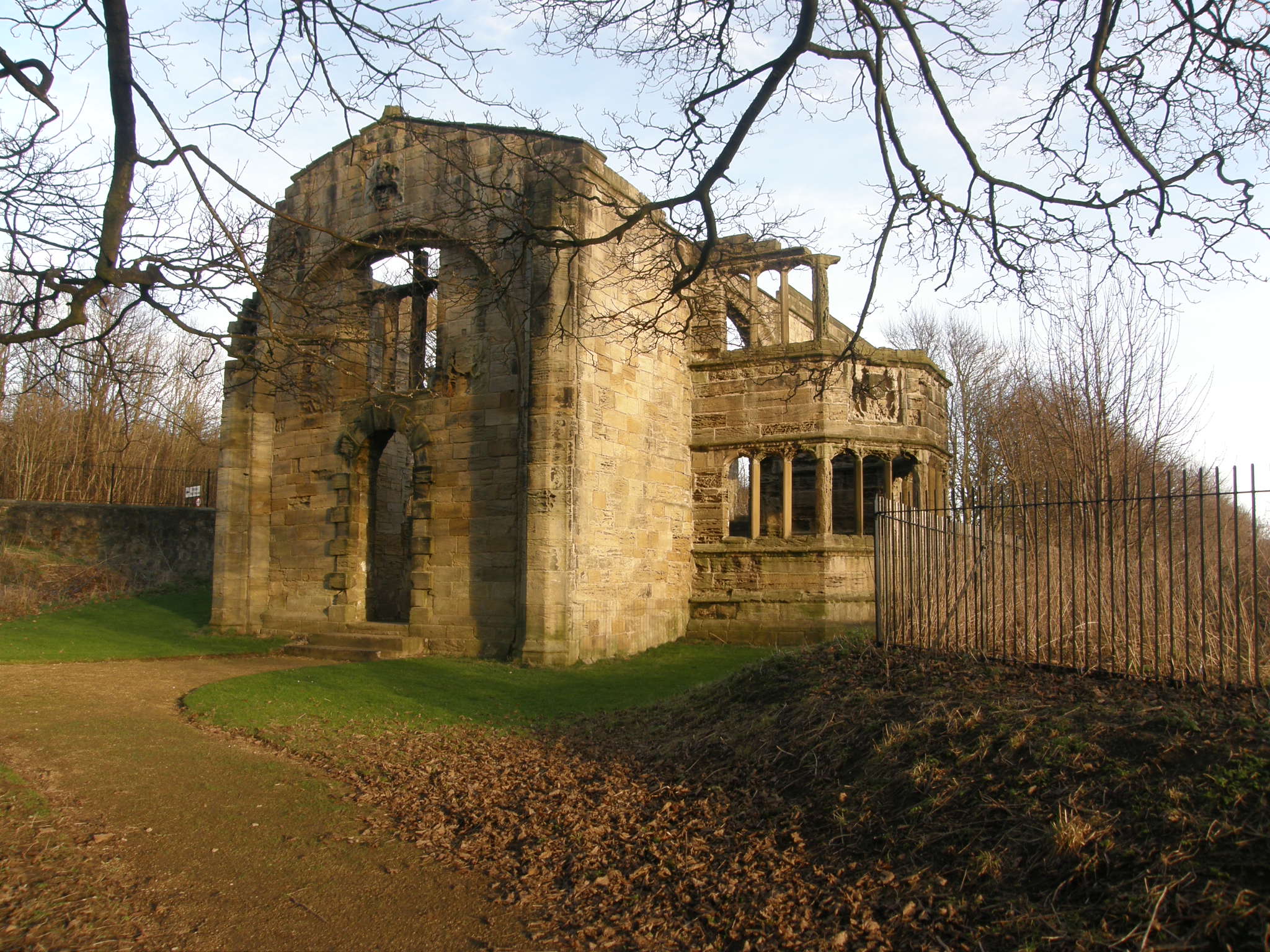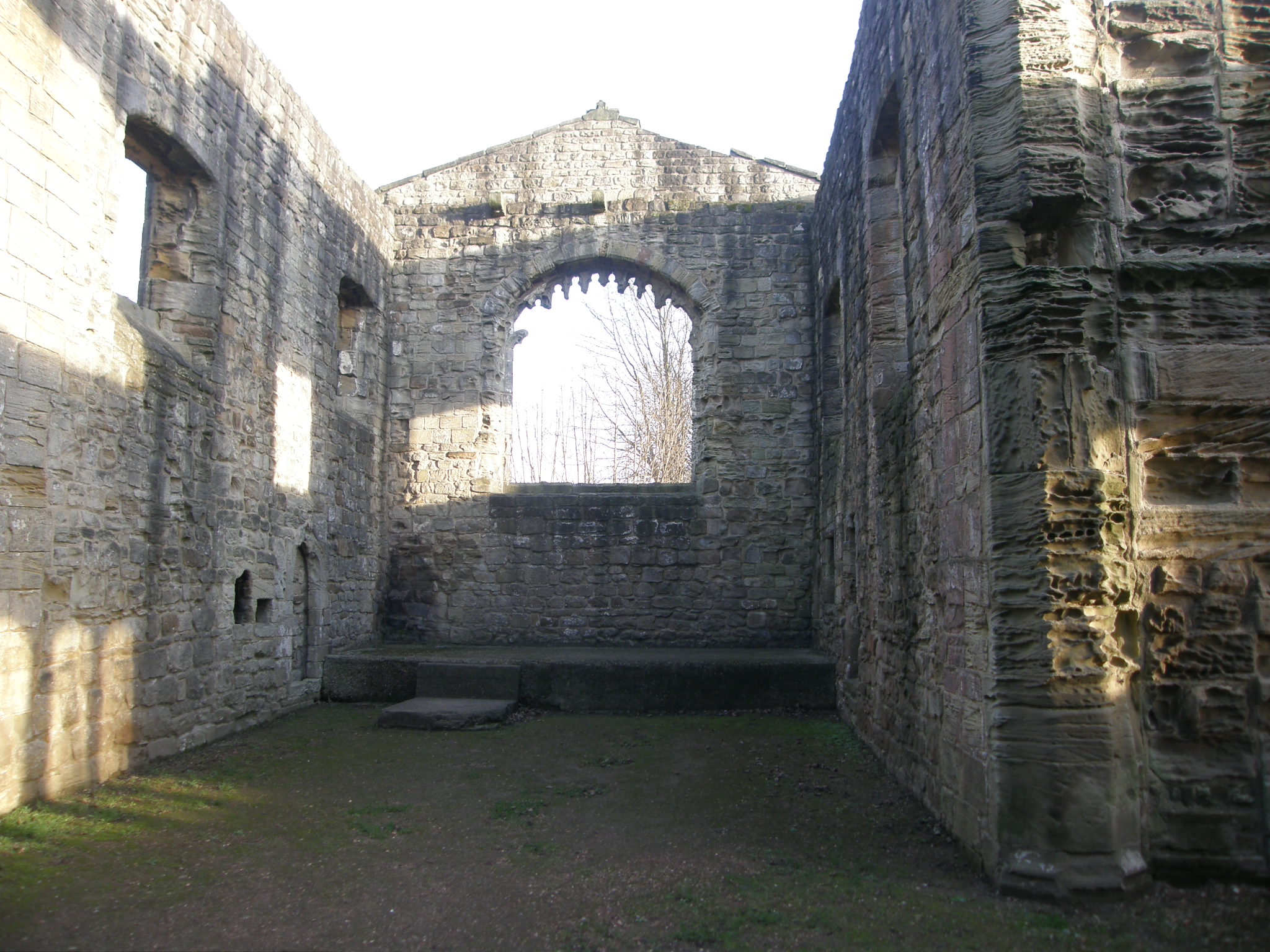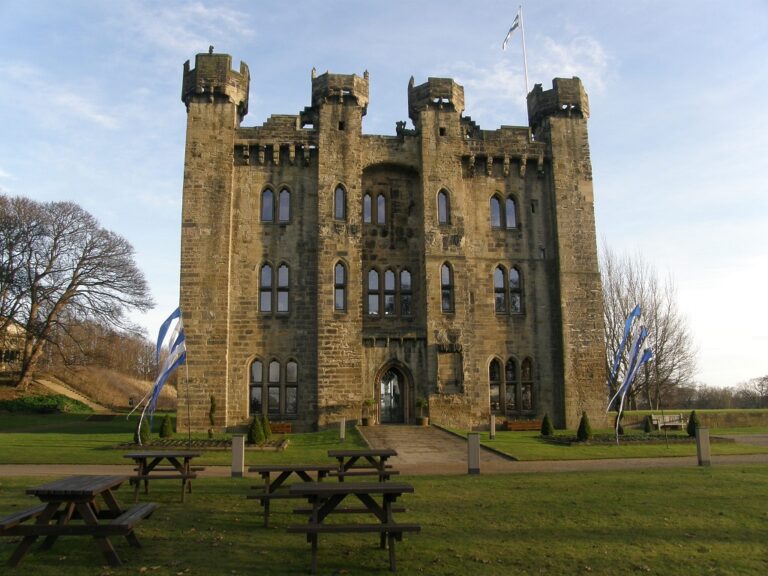The structure that stands adjacent to Hylton Castle is the chapel ruins, which are the remains of a medieval chapel that once served the Hylton estate. Known as the Chapel of St. Catherine, this small religious building dates back to the 14th century and was an integral part of the castle grounds, reflecting the spiritual needs of the Hylton family and their household.

The Chapel’s History
The Chapel of St. Catherine was built to serve as a private place of worship for the Hylton family, their retainers, and the local community. During medieval times, it was common for prominent estates to include a dedicated chapel, emphasizing the importance of faith in daily life. The chapel’s construction is believed to have coincided with the building of the stone castle under Sir William Hylton.
Over the centuries, as the Hylton family’s prominence waned, the chapel fell into disrepair. By the 18th century, it was largely abandoned, and much of the structure was lost to time. What remains today is a fascinating glimpse into the religious and architectural history of the site.
Architectural Features
Although the chapel is now in ruins, several features are still visible, including:
- Stone Walls: Portions of the chapel’s stonework survive, showcasing the same robust medieval craftsmanship seen in Hylton Castle.
- Window Tracery: Fragments of gothic-style windows give an indication of the chapel’s original design, with pointed arches that were typical of the period.
- Foundation Outlines: The foundations provide a clear idea of the chapel’s modest size and layout, hinting at its role as an intimate space for worship.
Significance of the Chapel
The chapel holds historical and cultural value as part of the Hylton Castle estate. It provides insights into the spiritual life of the medieval nobility and the architectural styles of the period. The connection between the castle and chapel emphasizes the Hylton family’s commitment to their faith and their standing in the local community.
Present Condition and Preservation
Today, the chapel ruins are protected as part of the broader Hylton Castle heritage site. Efforts have been made to stabilize the remaining structures to ensure their longevity. Visitors to Hylton Castle can explore the ruins as part of their visit, offering a deeper understanding of the castle’s historical context.

Legends and Folklore
Like the castle itself, the chapel ruins are surrounded by local legends. Some tales suggest the chapel was used for secret ceremonies or that ghostly figures have been seen near the ruins at night, adding an element of intrigue for visitors.
Together with Hylton Castle, the Chapel of St. Catherine stands as a poignant reminder of Sunderland’s medieval past, providing a connection to the region’s rich history and heritage.
![{"capture_mode":"AutoModule","faces":[]}](https://discoversunderland.com/wp-content/uploads/2025/01/Molly.jpg)


![{"capture_mode":"AutoModule","faces":[]}](https://discoversunderland.com/wp-content/uploads/2025/04/boating_lake_Roker_Park-768x704.jpg)

1 thought on “Chapel of St. Catherine”